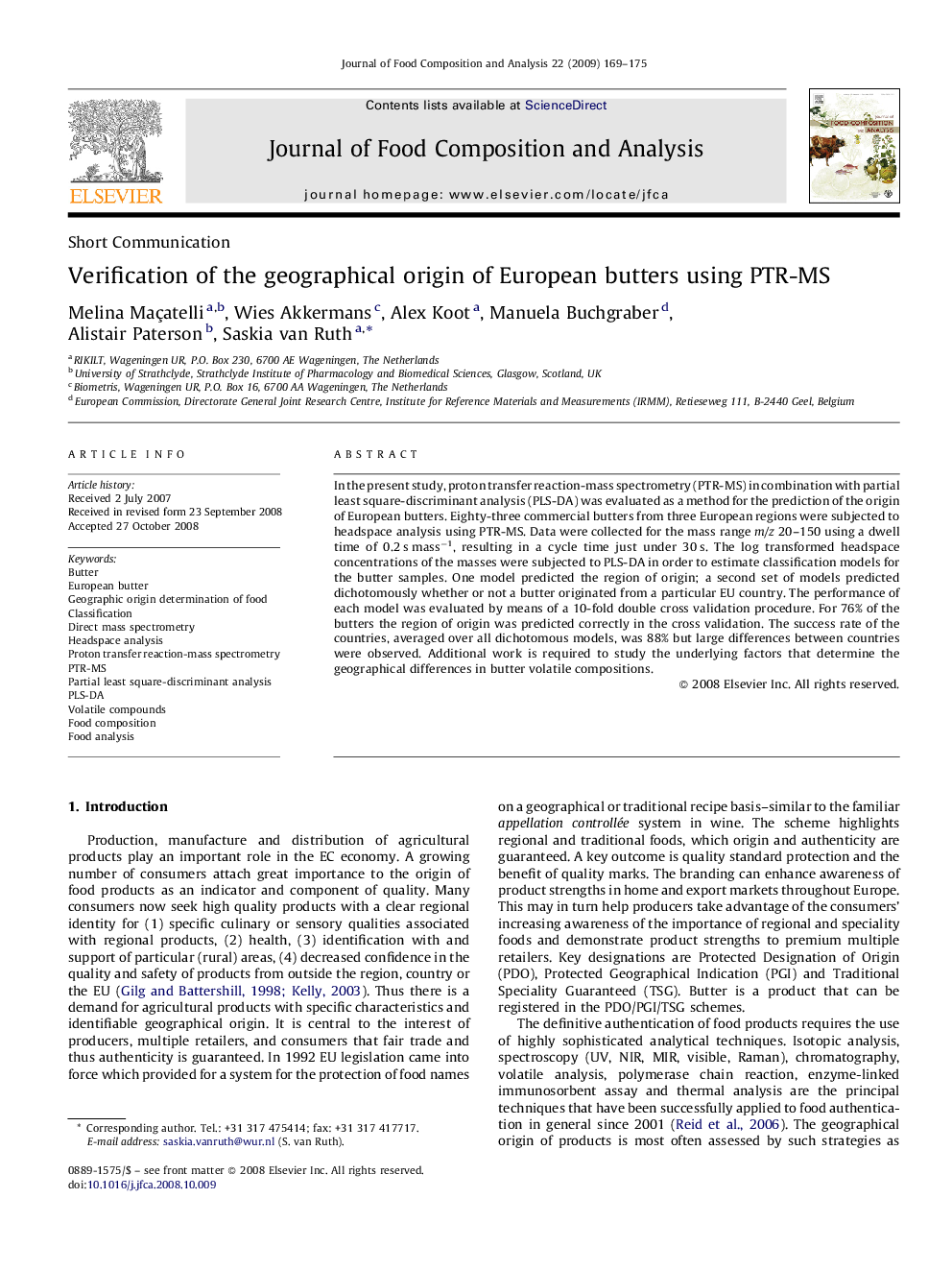| Article ID | Journal | Published Year | Pages | File Type |
|---|---|---|---|---|
| 1218649 | Journal of Food Composition and Analysis | 2009 | 7 Pages |
In the present study, proton transfer reaction-mass spectrometry (PTR-MS) in combination with partial least square-discriminant analysis (PLS-DA) was evaluated as a method for the prediction of the origin of European butters. Eighty-three commercial butters from three European regions were subjected to headspace analysis using PTR-MS. Data were collected for the mass range m/z 20–150 using a dwell time of 0.2 s mass−1, resulting in a cycle time just under 30 s. The log transformed headspace concentrations of the masses were subjected to PLS-DA in order to estimate classification models for the butter samples. One model predicted the region of origin; a second set of models predicted dichotomously whether or not a butter originated from a particular EU country. The performance of each model was evaluated by means of a 10-fold double cross validation procedure. For 76% of the butters the region of origin was predicted correctly in the cross validation. The success rate of the countries, averaged over all dichotomous models, was 88% but large differences between countries were observed. Additional work is required to study the underlying factors that determine the geographical differences in butter volatile compositions.
